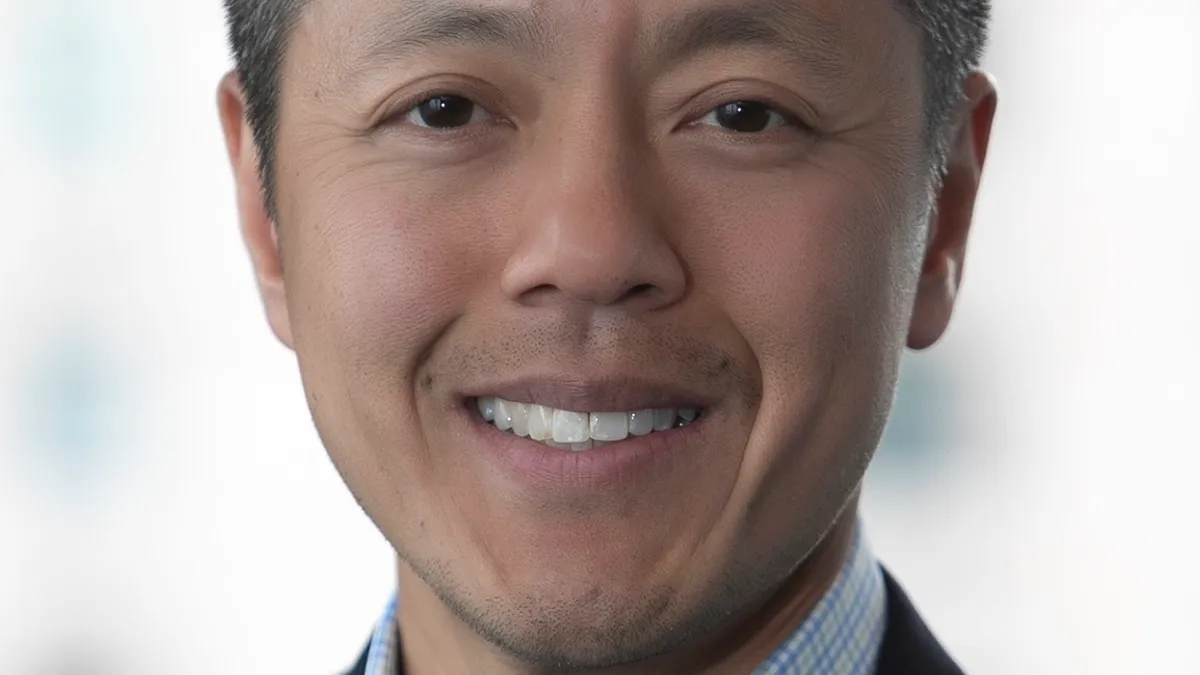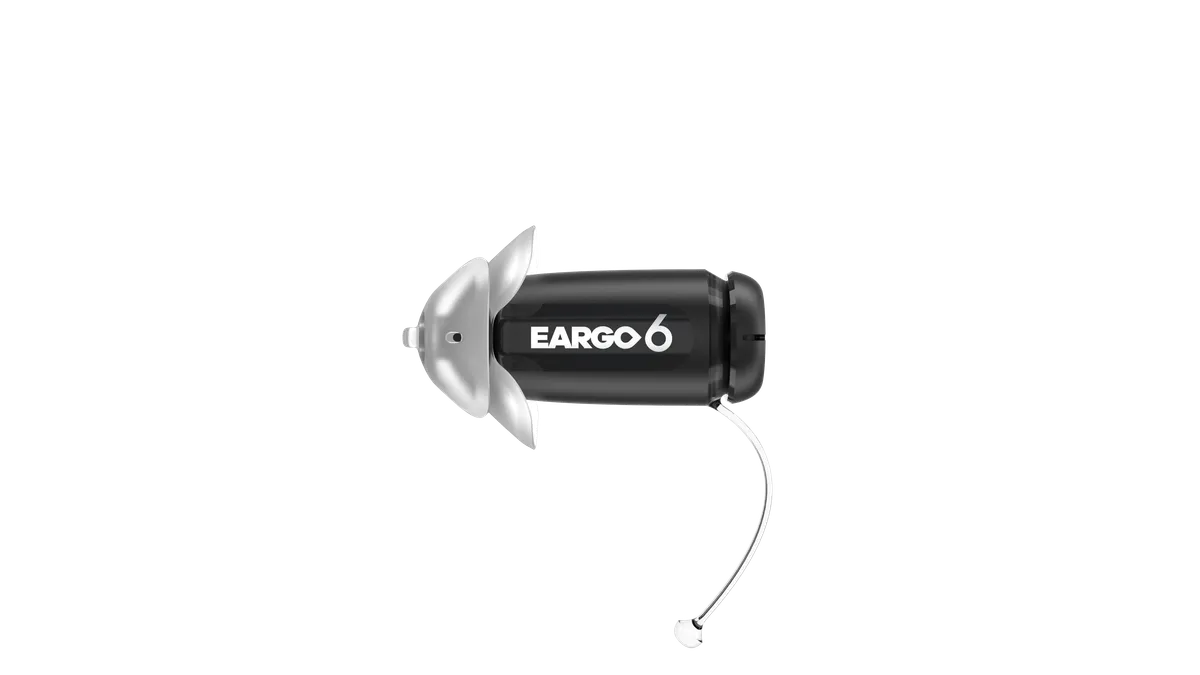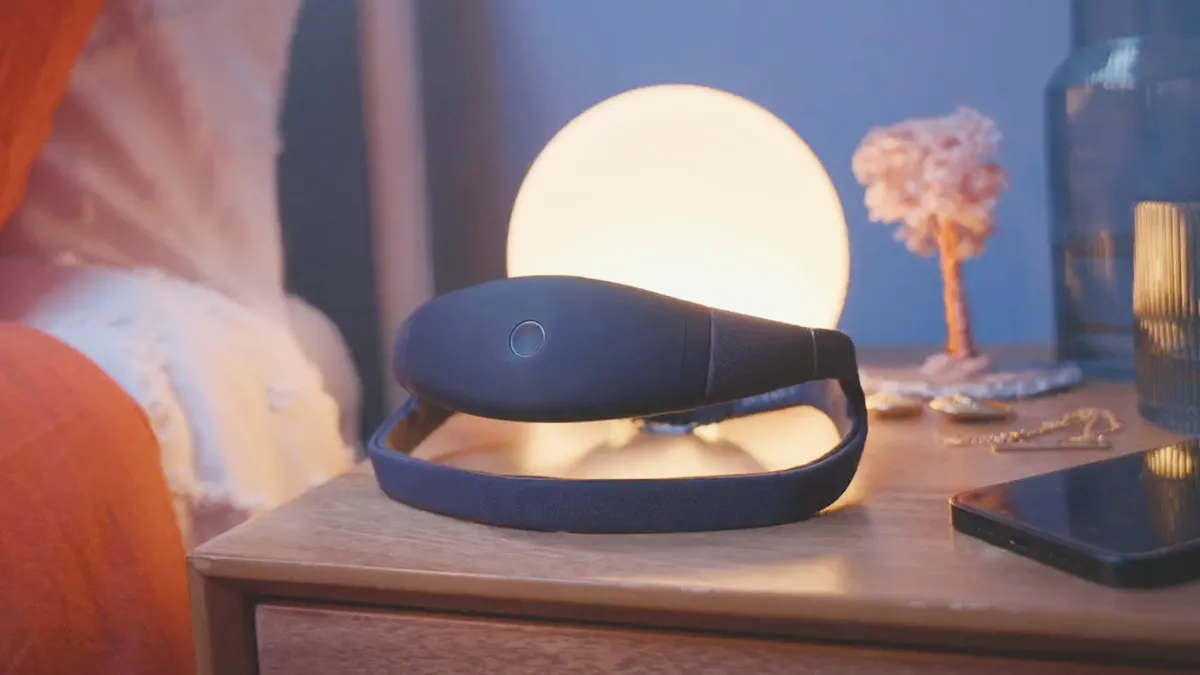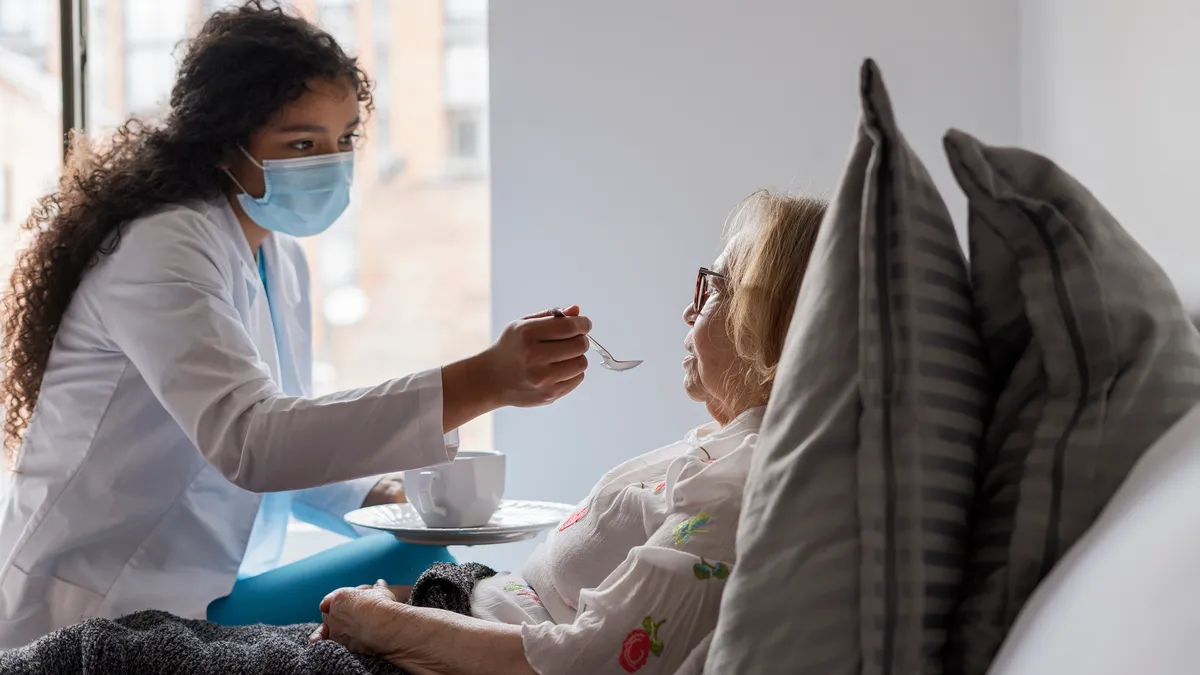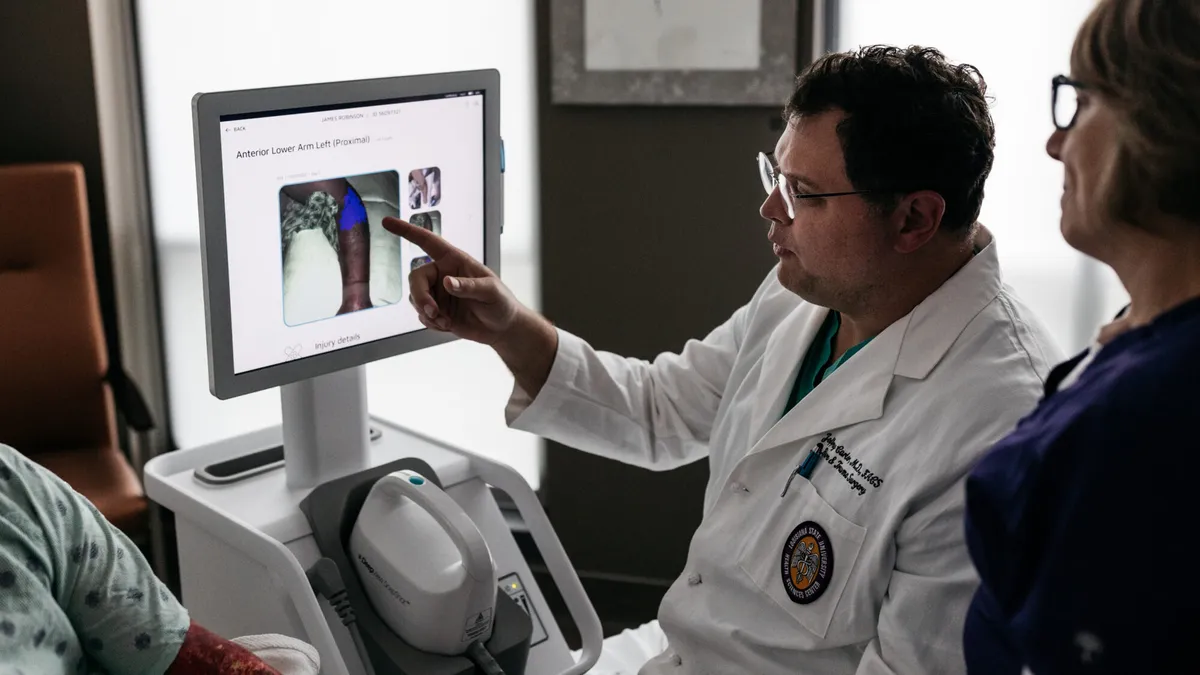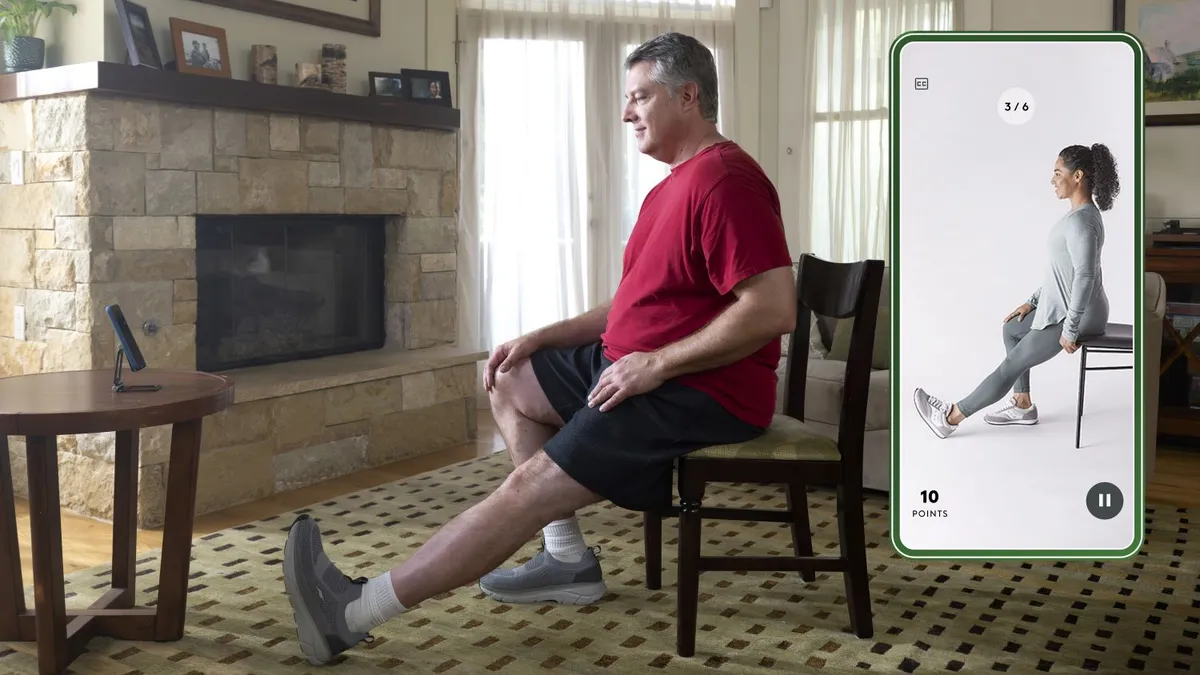Last summer, Medtronic’s patient monitoring business struck a partnership with BioIntelliSense, a Golden, Colo.-based startup making a wearable sticker that tracks temperature, respiratory rate and heart rate, among other metrics. Part of the reason for the deal was that the company noticed a trend of more patients leaving high-acuity areas of the hospital for lower-acuity settings and the home.
Medtronic offers the technology to its customers, allowing clinicians to follow patients into lower-acuity areas of the hospital, where monitoring is “sometimes not well done or not done at all, and then follow them to the home,” said Frank Chan, president of Medtronic’s patient monitoring business, during a panel discussion last week, hosted by the Colorado Bioscience Association in the Denver suburb of Westminster. “And so the entire premise of this is that as sicker patients leave the high-acuity areas of the hospital and move into these lower-acuity spaces, we're able to detect when patient deterioration happens.”
Chan and three other medtech executives discussed the rise of hospital care at home, and the difference between consumer monitoring devices and medical devices.
The rise of Hospital at Home
In 2020, the Centers for Medicare and Medicaid Services rolled out the Acute Hospital Care at Home program, giving hospitals the regulatory flexibility to treat patients at home, if they meet screening and monitoring requirements. The flexibilities, which were tied to the COVID-19 pandemic public health emergency, have been extended through 2024.
“COVID was a real epiphany for health systems to come to the realization that … they could actually start to take reasonable care of patients at home if they had some means to monitor that."

James Mault
CEO, BioIntelliSense
More than 250 hospitals participated in the program, according to Becker’s Hospital Review.
Chan said the trend is “here to stay,” as more hospitals invest in infrastructure that allows patients to recover in their homes. It’s fueled in part by staffing shortages, as well as the desire to help patients recover faster and avoid returning to the hospital, he added.
“COVID was a real epiphany for health systems to come to the realization that … they could actually start to take reasonable care of patients at home if they had some means to monitor that,” said BioIntelliSense CEO James Mault.
He started the company after selling a previous startup to Qualcomm, and received clearance from the Food and Drug Administration for its monitoring device shortly before the start of the pandemic. Seeing a big opportunity but being a small company, Mault found a vitally needed partner in Medtronic.
“You lose the opportunity if you don't have the ability to scale,” Mault said.
Balancing the workload
Of course, all of that patient-generated data has to go somewhere, and someone has to monitor it.
“Generating new, high-volume data sets from the home is only going to create a new and worse labor scenario unless you apply again what every other sector of our economy has figured out to do — apply an intelligence system,” Mault said.
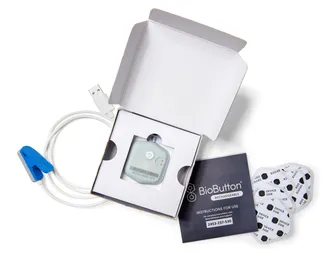
By using computers to analyze the data, a single trained nurse can monitor scores of patients, focusing only on those that the remote monitors indicate need personal attention, Mault said. Several hospitals have set up such command centers, he added.
For any remote monitoring device to be effective, it needs to detect a problem early, and fit into clinician workflows, said Natasha Bond, president of ERI Group, a Colorado-based contract design, development and manufacturing firm.
“We have nurses that don't sit down for 12 hour shifts, they don't pee, they don't eat. And we have innovators that are generating beautiful wearable sensors, and they send their data to a dashboard that a nurse can login to,” Bond said, asking the audience if they’re up to date with their inbox, or if they log into their banking app just because the data there is helpful.
“It doesn't work like that,” she added.
“The patients, the customers, they're demanding that ease of use, that interoperability. This market is now shifting, that there is this new demand upon us as innovators and builders of equipment … that we have to understand who is who's going to interact with it, and how they're going to interact with it.”

William Jaworski
Mikron Corp.
Innovation isn’t just the sensor and the databases and the analysis, but also the efforts around workflows and staffing and generating alerts when action is needed.
“And frankly, the overall state of the industry right now — I think the sensors and the databases and probably most of the algorithms are a little bit ahead of workflow optimization and alerting,” Bond said.
What about consumer devices?
With many consumers already owning smartwatches and smartphones, one challenge for device makers is bringing those tools into the world of patient monitoring. One obstacle, said Bond, is payment for devices like many smartwatches, which may have a clinical benefit but aren’t necessarily FDA-cleared, meaning that insurers are unlikely to pay for them. In addition to price expectations, people may also expect their devices to be as easy to use as a smartwatch, said William Jaworski, sales director of Mikron Corp.’s Denver office, which makes automation systems for medtech and pharmaceutical companies in the Americas.
“The patients, the customers, they're demanding that ease of use, that interoperability,” Jaworski said. “This market is now shifting. There is this new demand upon us as innovators and builders of equipment … that we have to understand who is who's going to interact with it, and how they're going to interact with it.”
BioIntelliSense’s Mault warned that many consumer devices aren’t accurate enough to be used for clinical tasks. During the pandemic, many people bought over-the-counter pulse oximeters to monitor themselves at home, but those devices were not FDA-cleared and had no performance requirements.
“People were going out and buying [them] at Walgreens and CVS. Consumers could get those very cheaply, for $10, $20,” Mault said. “But the reality is those are toys. They've never and still today have no requirement for any clinical accuracy whatsoever.”
Last summer, the FDA flagged problems with the accuracy of over-the-counter pulse oximeters, as well as concerns that even FDA-cleared devices have been shown to work less well in patients with darker skin. Apple faced a class action lawsuit late last year alleging racial bias for its Watch’s pulse oximetry feature.
When devices are used to monitor people in a home setting, they need to be just as accurate, if not more accurate, than their hospital equivalent, Mault said. Working in the ICU, it’s easier to tell if a monitor has a problem when the patient is sitting in front of you.
“The devices actually have to be more accurate or at least as accurate as what we've had in an intensive care unit, and they have to be more reliable in the hands of patients and families,” he said. “So there's a lot of really cool work to do to make this effortless and passive, but really, really accurate and really reliable in the consumer setting, and your Apple Watch isn't there yet.”


